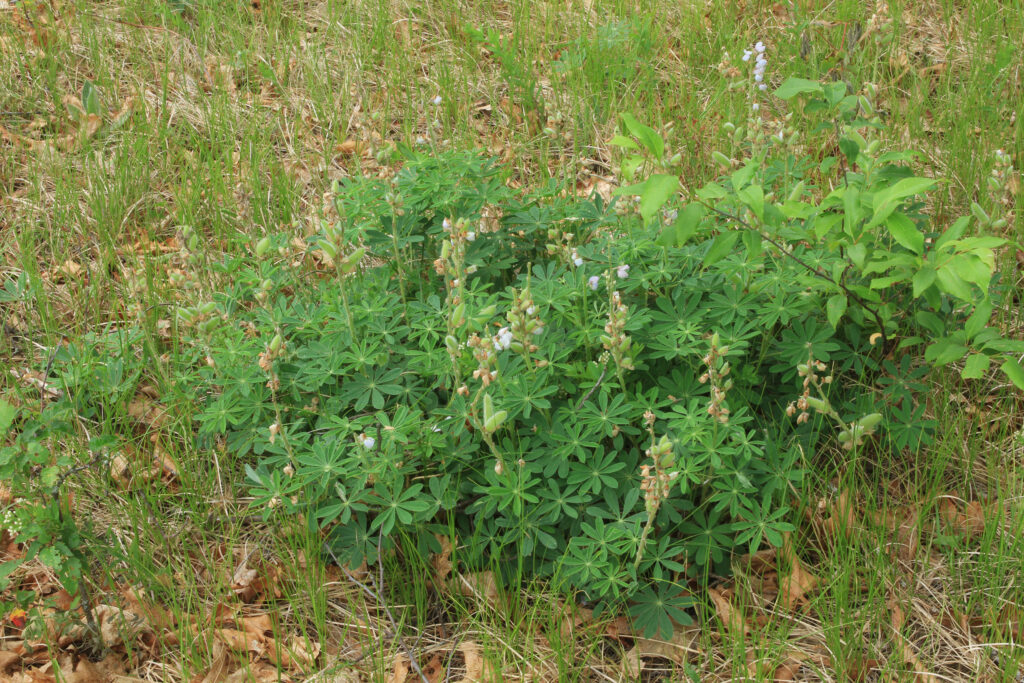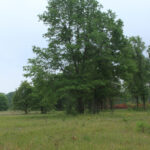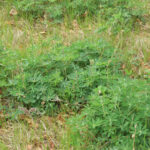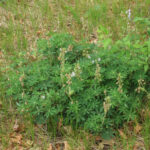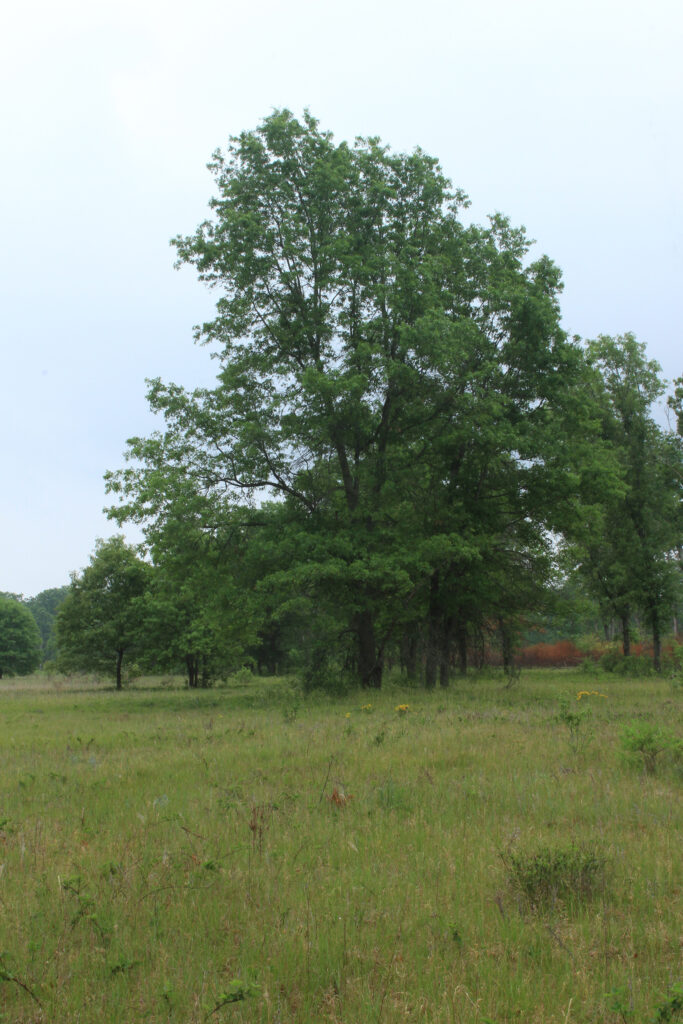
During a visit to the Newaygo Prairies in early June, I noticed several native prairie species that showed significant frost/freeze damage form a May freeze. Young oak leaves were brown and shriveled as were the flower stems on Goat’s-rue (Tephrosia virginiana). Porcupine grass (Hesperostipa spartea) had deformed bloom stems and others showed similar damage. In the Karner Blue Preserve, the Lupines (Lupinus perennis) had very few seed on the plants that are out in the open, but those that were under the protection of the oaks had many seed pods and even a few blooms still going. The frost damage stopped at the tree canopy edge. The trees not only sheltered plants from the frost, but also provide micro climates in the savanna.
Savanna is thought by some to be a continuum from prairie to woodland while others put it in a camp of its own. While savanna seems to be the transition between the two environments, it is also a system by its’ self. Based on normal definitions of savanna and prairie, much of the Newaygo and Allegan prairies are more likely true savanna.
Various processes including fire keep the understory clear of woodland plants and keep the tree density low. This allows for many herbaceous forbs to thrive in the cooler shade of the oaks as opposed to the hotter openness of the open prairie. Simple observation shows a higher plant diversity in the oak savanna than the open prairie or adjacent oak woodland. When you visit some of these prairie remnants in Michigan, you will find the greater number of species under and near the trees. The oaks play a significant role in these areas. Insects, birds and other wildlife are more abundant than in the open.
Many prairie plants are well suited to thrive in both savanna or prairie conditions. Others do much better in the cooler shelter of the oaks than in the hot open prairie. Soils can also be affected as the decaying oak leaves add to the soil below them, providing a bit more organic matter. The soils in these areas tend to be courser sand and consequently not high in organic matter, nutrients or moisture. Because of the shade, moisture may also be slightly higher under the trees. Grasses, especially the taller ones however do not seem to thrive in these conditions. Comparatively, the soils of the tall grass region in southern Michigan are darker and richer and today grow much corn.
 Click on the title of a post to view a full gallery of images.
Click on the title of a post to view a full gallery of images.

